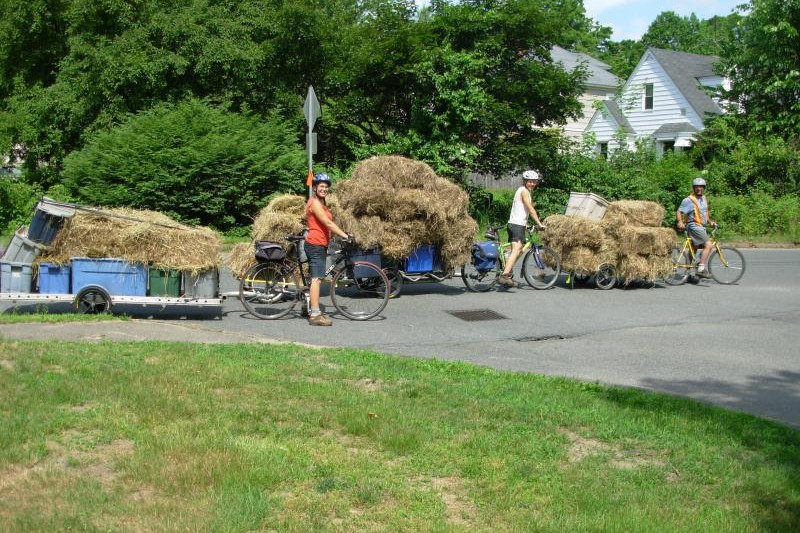What is compost? How to make compost with weeds and garbage that can be used for composting?
Share composting is a kind of organic fertilizer made from animal and plant remains and excreta containing fertilizer components, mixed accumulation of soil and minerals, fermentation and microbial decomposition under the condition of high temperature and humidity.

Full of hay to compost.
The main results are as follows: (1) the stacking site should be the place with higher terrain, leeward to the sun, close to the water source and convenient for transportation and application. For the convenience of transportation and application, the stacking site can be dispersed appropriately. The stacking site is selected and the ground is leveled.
(2) set up ventilation channels: on the flat and compacted site, dig "ten" or "well" shaped ditches with a depth of about 15ml / 20cm, cover the ditches vertically and horizontally with hard crop straw as an aeration ditch at the bottom of compost, and at the intersection of two small ditches, place sticks vertically with the ground or long thick and hard straw bundled into bundles to serve as upper and lower ventilation channels for composting.
(3) the formula ratio of stacking materials: generally, the proportion of stacking materials is about 1000 jin of crop straw, weeds, fallen leaves, etc., adding 200 jin of feces and urine and 200 jin of water (depending on the dry and wet amount of raw materials), each layer can be properly covered with a thin layer of soil, mainly to play the role of limestone, peat and so on.
(4) accumulation
A lay a layer of sludge, fine soil or turf soil with a thickness of about 20cm on the aeration ditch of the accumulation site as a base pad for absorbing infiltration fertilizer.
B then pile up the processed materials layer by layer (about 25 centimeters per layer). And sprinkle manure and water on each layer, then sprinkle a small amount of thin soil or lime evenly.
C the straw must be soaked with water, and adding enough water is the key to composting.
(5) Post-heap management
A during the composting period, the changes of moisture and temperature in the upper, middle and lower parts of the reactor should be checked frequently. The inspection method can be tested by composting thermometer. If there is no compost thermometer, you can insert a long iron bar into the heap, park it for 5 minutes, and then pull it out and try it by hand. The temperature of the hands is about 30 ℃, the fever is about 40 ℃ and 50 ℃, and the fever is more than 60 ℃. Check the moisture content to observe the dry and wet condition of the surface of the inserted part of the iron bar. If it is in a wet state, it means an appropriate amount of water; if it is in a dry state, it means an appropriate amount of water; if it is in a dry state, it means that there is too little water, and you can drill a hole at the top of the pile to add water.
Related
- A course of planting techniques and methods on how to grow carrots
- How to plant the latest tulips?
- Is it better to pick tea in the morning or in the afternoon? When is the best time for tea to be picked? what is the third or fifth tea?
- Launch Yuanxiao Happy combination Haocha + Tea Yuan healthy Taste
- Penghu Tourism "Fireworks 20 Parade with You"
- 2022 West Lake Happiness holds "Digital Revitalization Voucher" and draws iphone13 and laptop.
- Banqiao Fuzhou social houses are designed to change start-up combined with police elimination to create a safe and livable environment
- The convenient measure of "mechanical weeding" in Xinbei has been abused and the Agriculture Bureau has imposed heavy penalties on the illegal land consolidation.
- Changgeng University Joins Hands with Four Memory Factories to Rescue Memory Talent Shortage
- The list of Taiwan's top 100 MVP managers is listed by the Director-General of the Farmers' Association of Sanxia District.



